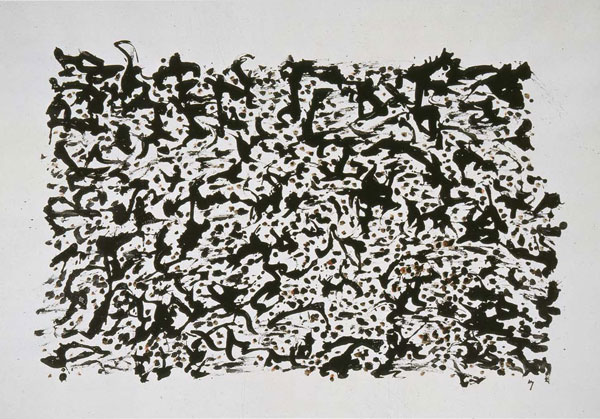Abstraction in the IVAM Collection
In this exhibition there are 54 paintings and sculptures which date from 1913 to the end of the twentieth century, documenting the different variants of abstraction, from the exuberant, formless abstraction defined in the early years to the strict geometries of the period between the two World Wars. It also covers the monumental oeuvre of the most prestigious living Spanish artist, Antoni Tàpies, who uses a mixed language. Starting from the idea proposed by the exhibition’s curators, Dore Ashton and Consuelo Ciscar, that “the history of art is a long conversation between many voices”, the show introduces us to a veritable chorus of artists from the modern age. The viewpoints of the artists represented diverge very significantly, ranging from the strict geometries of artists such as Jean Hélion, László Moholy-Nagy and Naum Gabo to the more lyrical and often eccentric expressions of individuals such as Lucio Fontana, Jean Arp, Julio González and Kurt Schwitters. These famous artists of the twentieth century thought they were inventing a new language of forms, with its own grammar and syntax. The exhibition brings out the great variety in their individual points of view. Some artists, especially in the interwar period, devoted themselves to the extraction of eternal geometries in their paintings and constructions. The IVAM Collection is exceptionally rich in this area, with works by international artists such as Otto Freundlich, Frantisek Kupka and Sophie Taeuber-Arp, among others. Some of the other artists represented in the IVAM Collection considered that they were offering a new perspective on abstraction because, for them, it consisted in “abstracting themselves” from the visible elements of nature and freely adapting natural forms in their paintings and sculptures (Robert Delaunay, Joaquín Torres-García, Julio González, Kurt Schwitters and Paul Klee). After the Second World War, many artists pursued new paths and worked with abstraction in unexpected ways. These new trends were given various labels, including Informalism and Abstract Expressionism. There were outstanding American artists in this new movement, and in this exhibition their principal representative is Arshile Gorky, who is accompanied by Lee Krasner, Ad Reinhardt, Hans Hofmann, Richard Serra and Esteban Vicente. The main European abstract works are exceptionally well represented at the IVAM. In the context of the international movement after the Second World War which led towards Informalism, Spain occupies a distinguished place. The most significant artist is probably Antoni Tàpies, whose large works from the period between 1948 and 1980 have been included. Other Spanish artists also feature in the show, such as Martín Chirino, Antonio Saura, Eduardo Chillida, Manuel Millares and Alberto Ràfols-Casamada. The outstanding European artists include Pierre Soulages, with two very eloquent paintings, one dated 1965 and the other 1984, and the artist and writer Henri Michaux. They are accompanied by the Scandinavian painter Per Kirkeby, whose large painting personifies a free approach to abstract landscape. The exhibition brings out the rich variety of individual voices and their approaches to abstraction. These artists transmitted the vocabulary of painting and sculpture to a wider public. The IVAM Collection is unusually rich in the contrast of international voices and techniques, from the twentieth century to the present day.



